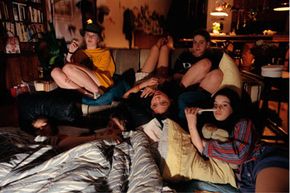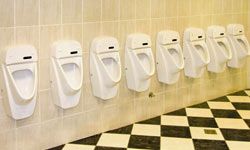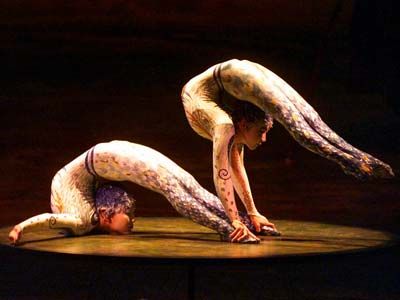Tales of summer camp and slumber party pranks are as plentiful (and exaggerated) as fishing stories. We've all heard of the short-sheeted bed or of the combined power of a handful of shaving cream and a feather. But how much should we believe the ultimate cautionary tale against being the first to fall asleep: making someone wet the bed by placing his or her hand in a pan of warm water? Should we accept the steady stream of reported successes, or seek the truth in the annals of scientific research, which scarcely mentions the phenomenon?
Enter the producers of "MythBusters," to whom rampant anecdotal evidence is a call to action. In episode 136, "Mini Myth Mayhem," the hosts tested the time-honored tinkle trick on hosts Adam and Jamie and on a crew member named Matt. Relying on a moisture sensor to detect any urinary mishaps and sleep monitoring equipment to ensure each subject had slipped into solid sleep, they dunked, dipped and dripped their way to a negative result: Not one of the three subjects wet himself when his hand went for a moonlight swim.
Advertisement
But numerous experimental design flaws and problems left their result circling the drain. Beyond the distorting influences of their very small sample size and, worse, of using subjects who knew that they were being observed and were aware of the experiment's goals, Jamie never achieved sleep, Adam was repeatedly awoken by his sleep apnea and Matt activated his wetness alarm with spilled water. Moreover, Adam's hand position kept Jamie from dousing it with more than a drizzle [source: MythBusters].
So, attempts at answering the question experimentally are hardly flush with success. Could there be a theoretical basis for believing the prank is possible? Immersion of the lower body and use of warm water bottles have been shown to relieve post-surgical urinary retention, but a damp hand is a far cry from a wet bottom. On the other hand, the power of suggestion might hold some explanatory promise; many people with medically or socially shy bladders successfully use the sound or image of running water to open the floodgates.
We'll examine both immersion and suggestion in detail in the next section, and ask the related question: What role does sleep play in the equation?
Advertisement



